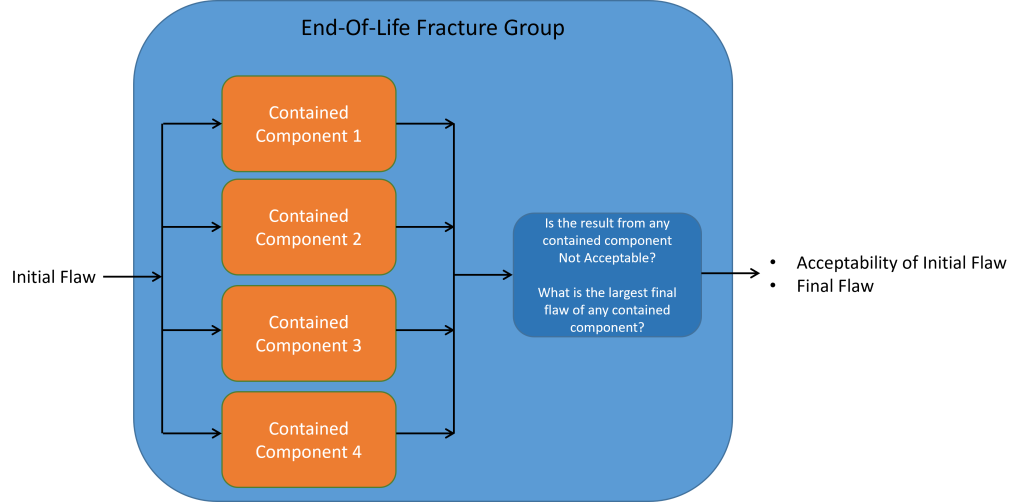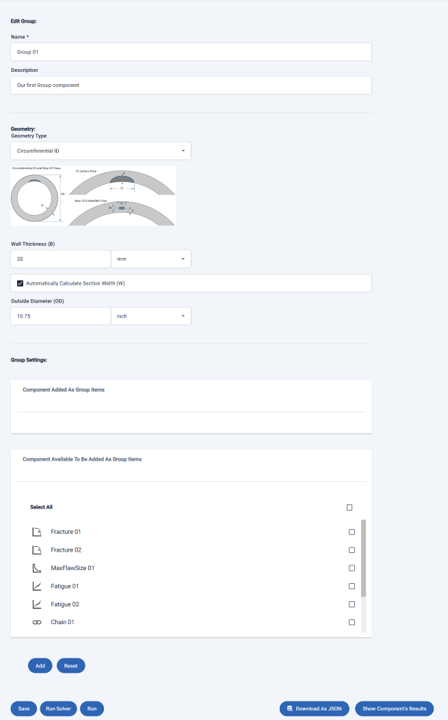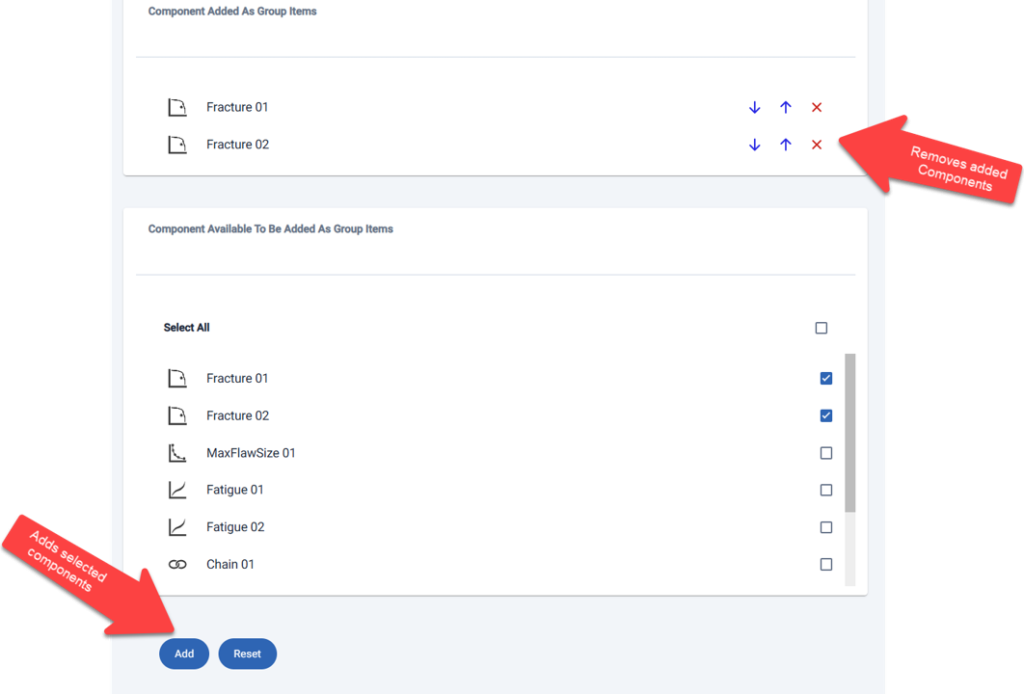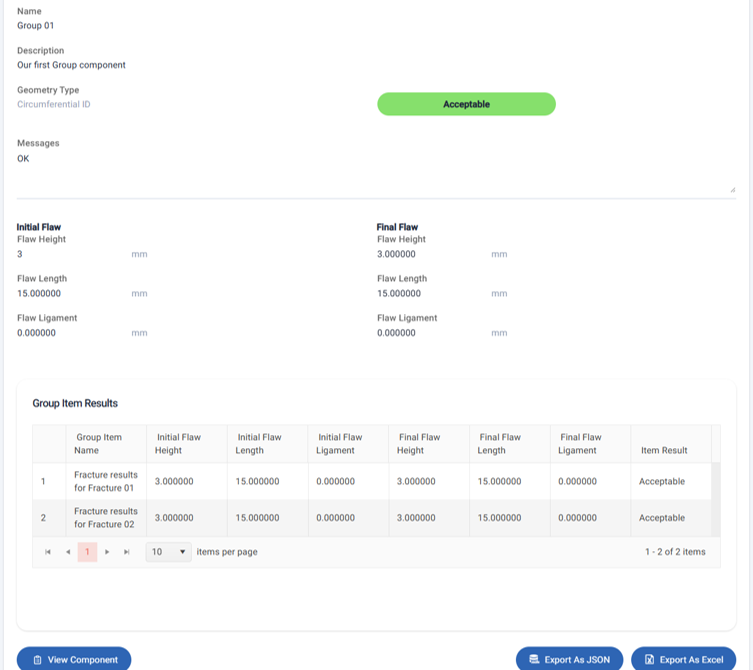The Group Component | Assessments in Parallel

In This Article
The Material ECA Group component is a Utility component that allows any number of Material ECA components, including Chain and other Group components, to be processed together in parallel.
The topics are covered in this article include the following:
- Overview
- Example Applications of the Group Component
- Creating a New Group Component
- Running a Group Component and Viewing the Results
- Running the Solver on a Group Component and Viewing the Results
Overview
The Group component can contain any number of Material ECA components of any type. When the Group is run, it takes an initial flaw. Each component contained in the Group uses that initial flaw and processes it individually. The Group component looks at the results from each contained component and returns the final flaw and acceptability for the Group. The final flaw is the largest final flaw resulting from any contained component, and the Group is Not Acceptable if one or more contained component returns Not Acceptable. See the following figure.
The Solver is run on a Group component the same way it’s run on Fracture and Fatigue components, and the results have the same format. The Acceptable flaws are those flaws that are acceptable to every contained component. The Not Acceptable flaws are those flaws that are not acceptable to one or more contained components.
Also, like other components, all results can be exported as an Excel file or as a JSON file.
Example Applications of the Group Component
End-Of-Life Fracture: Users create multiple Fracture components representing various cases or end-of-life scenarios (e.g., consistent with API STD 1104 and DNV RP-F108), add them to the Group component, and run them together, ensuring all events or scenarios of interest are addressed.
Reeling Installation: To address the potential for initial flaws at 12 and 6 o’clock positions during reeling operations (e.g., per DNV RP-F108), two Chain components, one addressing initial flaws at 12 o’clock and the other addressing initial flaws at 6 o’clock, are added to the Group.
Creating a New Group Component
A Group component is created the same way other components are created. From the Components page, click the tile with the plus (+) sign. In the Add New Component form, select “Group”, add a name and description, and click Save, as shown in here. The newly created Group component is available on the Components page. Click it to open it.
Input the following: Geometry Type set to Circumferential ID, Wall thickness set to 20mm, and diameter set to 10.75 inches, as shown in the following screenshot.

The components available to be added to the Group are listed in the Group Settings section. The available components must already be in the Project and have the same Geometry Type. Select The Fracture 01 and Fracture 02 components and click the Add button, as shown in the following screenshot.
Click the Save button, and the Group component is available to be run or use the Solver, like every other component.
Running a Group Component and Reviewing the Results
Scroll to the bottom of the input form for the Group component and click the Run button. The Input Initial Flaw form appears, input a 3mm by 15mm initial surface flaw, and click the Run button, as shown here:
Navigate to find the Result and open it.
The summary results for the Group and the results from each added component are provided.
Results from a Group component can be exported as Excel or JSON files.
Running the Solver on a Group Component
Return to the Group component, scroll to the bottom, and click the Run Solver button. The Solver Setting form appears. Select High Resolution and click the Run Solver button. Navigate to the results and click the result to open it.
Screenshot of the Solver Results for the Group
The Solver Results appear like the Solver Results for other components. Acceptable flaws are those acceptable to all components added to the Group. Not Acceptable flaws were not acceptable to at least one component added to the Group. The Critical flaws are the largest Acceptable flaws for each flaw ratio.
The Solver results can be exported as Excel of JSON files.
Next Article: The Chain Component
Last Updated: 20 July 2024




